Simplified Modelling of Failure in High Strength Bolts under Combined Tension and Bending
Abstract
:1. Introduction
2. Modelling of Bolts in Tension
- Elasticity. The initial stiffness is obtained assuming that the behaviour of the bolt–nut assembly is composed of two components acting in series: the bolt shank and the threaded connection between the nut and the shank:where Kth is the initial stiffness of the thread; Kb is the initial stiffness of the bolt–nut assembly; and Ksh is the initial stiffness of the shank.
- Plasticity. The plastic deformation was obtained by subtracting the total deformations of the thread from the elastic ones:where x is the total deformation of the threaded connection, F is the force, and Kth is the initial stiffness of the thread.
- Damage. The plastic motion initiation criterion is selected; linear motion damage is specified. To do this, two points must be selected: plastic motion initiation and plastic motion at failure. Both points are kept from the experimental curve: the first one (Point 1 in Figure 7) is the point coinciding with the maximum force achieved, while the second one is the point after which the curve starts to rapidly decrease (Point 2 in Figure 7).

3. Modelling of Bolts under Combined Tension and Bending
4. Discussion
5. Conclusions
Author Contributions
Funding
Institutional Review Board Statement
Informed Consent Statement
Data Availability Statement
Conflicts of Interest
References
- BS EN 14399; High-Strength Structural Bolting Assemblies for Preloading—Part 3: System HR—Hexagon Bolt and Nut Assemblies—Part 4: System HV—Hexagon Bolt and Nut Assemblies. BSI Standards Publication: London, UK, 2015.
- Chesoan, A.; Stratan, A.; Neagu, C.; Dubina, D. Experimental investigation of the length influence on removable links. In Proceedings of the IRF2020: 7th International Conference Integrity-Reliability-Failure, INEGI-FEUP, Funchal, Portugal, 6–10 September 2020; Silva Gomes, J.F., Meguid, S.A., Eds.; pp. 977–986. [Google Scholar]
- Plaitano, F. Experimental Tests and FEM Simulations of Bolted Links with Flush and Extended End Plates Connections under Monotonic and Cyclic Loads. Master’s Thesis, University of Salerno, Fisciano, Italy, 15 June 2020. [Google Scholar]
- Tartaglia, R.; D’Aniello, M. Behaviour of T-Stub under Mode 2 and 3 with HV and HR Bolts. In Proceedings of the 8th International Conference on Computational Methods in Structural Dynamics and Earthquake Engineering, Athens, Greece, 28–30 June 2021; pp. 4212–4218. [Google Scholar]
- Nastri, E.; Plaitano, F. A review on the removable link in eccentrically braced frames: Benefits and performances. International conference of numerical analysis and applied mathematics ICNAAM 2020. AIP Conf. Proc. 2022, 2425, 120008. [Google Scholar] [CrossRef]
- Latour, M.; Piluso, V.; Rizzano, G. Experimental analysis of beam-to-column joints equipped with sprayed aluminium friction dampers. J. Constr. Steel Res. 2018, 146, 33–48. [Google Scholar] [CrossRef]
- Latour, M.; Rizzano, G. Experimental behavior and mechanical modeling of dissipative T-stub connections. J. Struct. Eng. 2012, 138, 170–182. [Google Scholar] [CrossRef]
- Iannone, F.; Latour, M.; Piluso, V.; Rizzano, G. Experimental analysis of bolted steel beam-to-column connections: Component identification. J. Earthq. Eng. 2011, 15, 214–244. [Google Scholar] [CrossRef]
- Jakab, D.; Stratan, A.; Dubina, D. Numerical testing of steel beam-to-column bolted extended end-plate connection with haunches. In Proceedings of the 1st International Conference on Computational Methods and Applications in Engineering (ICCMAE, Timisoara, Romania, 23–26 May 2018; Volume 29, p. 02008. [Google Scholar] [CrossRef] [Green Version]
- D’Aniello, M.; Cassiano, D.; Landolfo, R. Simplified criteria for finite element modelling of European preloadable bolts. Steel Compos. Struct. 2017, 24, 643–658. [Google Scholar] [CrossRef]
- D’Aniello, M.; Cassiano, D.; Landolfo, R. Monotonic and cyclic inelastic tensile response of European preloadable gr10.9 bolt assemblies. J. Constr. Steel Res. 2016, 124, 77–90. [Google Scholar] [CrossRef]
- Grimsmo, E.L.; Aalberg, A.; Langseth, M.; Clausen, A.H. Failure modes of bolt and nut assemblies under tensile loading. J. Constr. Steel Res. 2016, 126, 15–25. [Google Scholar] [CrossRef]
- Hedayat, A.; Afzadi, E.A.; Iranpour, A. Prediction of the Bolt Fracture in Shear Using Finite Element Method. Structures 2017, 12, 188–210. [Google Scholar]
- Reeder, B.; Grimmer, P.; Emery, J. Cohesive zone models for reduced-order fastener failure. In Proceedings of the AIAA SciTech Forum, San Diego, CA, USA, 7–11 January 2019. [Google Scholar]
- Warren, M.; Antoniu, A.; Stewart, L. A review of experimentation and computational modeling of dynamic bolt fracture. J. Constr. Steel Res. 2022, 194, 107293. [Google Scholar] [CrossRef]
- Zhou, W.; Zhang, R.; Fang, D. Design and analysis of the porous ZrO2/(ZrO2 + Ni) ceramic joint with load bearing–heat insulation integration. Ceram. Int. 2016, 42, 1416–1424. [Google Scholar] [CrossRef]
- Noda, N.A.; Liu, X.; Sano, Y.; Tateishi, K.; Wang, B.; Takase, Y. Three-dimensional finite element analysis for prevailing torque of bolt-nut connection having slight pitch difference. J. Mech. Sci. Technol. 2020, 34, 2469–2476. [Google Scholar] [CrossRef]
- ABAQUS User Manual; Dassault Systèmes Simulia Corp.: Providence, RI, USA, 2022.
- Cai, W.; Jiang, J.; Li, G.Q. Prediction of fracture behavior for high-strength steel bolts at elevated temperatures. In Proceedings of the SiF 2020—The 11th International Conference on Structures in Fire, Brisbane, Australia, 30 November–2 December 2020. [Google Scholar]
- Xin, H.; Li, J.; Veljkovic, M.; Liu, Y.; Sun, Q. Evaluating the strength of grade 10.9 bolts subject to multiaxial loading using the micromechanical failure index: MCEPS. Steel Constr. 2022, 15, 140–151. [Google Scholar] [CrossRef]
- Mavrodontis, N. Modeling Bolted Connections with Abaqus FEA. Simuleon FEA Blog. 2018. Available online: https://info.simuleon.com/blog/modeling-bolted-connections-with-abaqus-fea (accessed on 19 August 2022).
- Wagner, R.H.N. ABAQUS Tutorial: Damage for Ductile Metals—Material Model Explained—Ductile Damage. ResearchGate. 2021. Available online: https://www.researchgate.net/publication/350124892_ABAQUS_Tutorial_Damage_for_Ductile_Metals_-_Material_Model_Explained_-_Ductile_Damage (accessed on 19 August 2022).
- Kiran, R.; Khandelwal, K. A triaxiality and Lode parameter dependent ductile fracture criterion. Eng. Fract. Mech. 2014, 128, 121–138. [Google Scholar] [CrossRef]
- Sajid, H.U.; Kiran, R. Influence of high stress triaxiality on mechanical strength of ASTM A36, ASTM A572 and ASTM A992 steels. Constr. Build. Mater. 2018, 176, 129–134. [Google Scholar] [CrossRef]
- Brünig, M.; Gerke, S.; Hagenbrock, V. Micro-mechanical studies on the effect of the stress triaxiality and the Lode parameter on ductile damage. Int. J. Plast. 2013, 50, 49–65. [Google Scholar] [CrossRef]
- ISO 898-1; Mechanical Properties of Fasteners Made of Carbon Steel and Alloy Steel—Part 1: Bolts, Screws and Studs with Specified Property Classes—Coarse Thread and Fine Pitch Thread. International Standard: Geneva, Switzerland, 2009.
- Okorn, L.; Nagode, M.; Klemenc, J.; Oman, S. Analysis of Additional Load and Fatigue Life of Preloaded Bolts in a Flange Joint Considering a Bolt Bending Load. Metals 2021, 11, 449. [Google Scholar] [CrossRef]

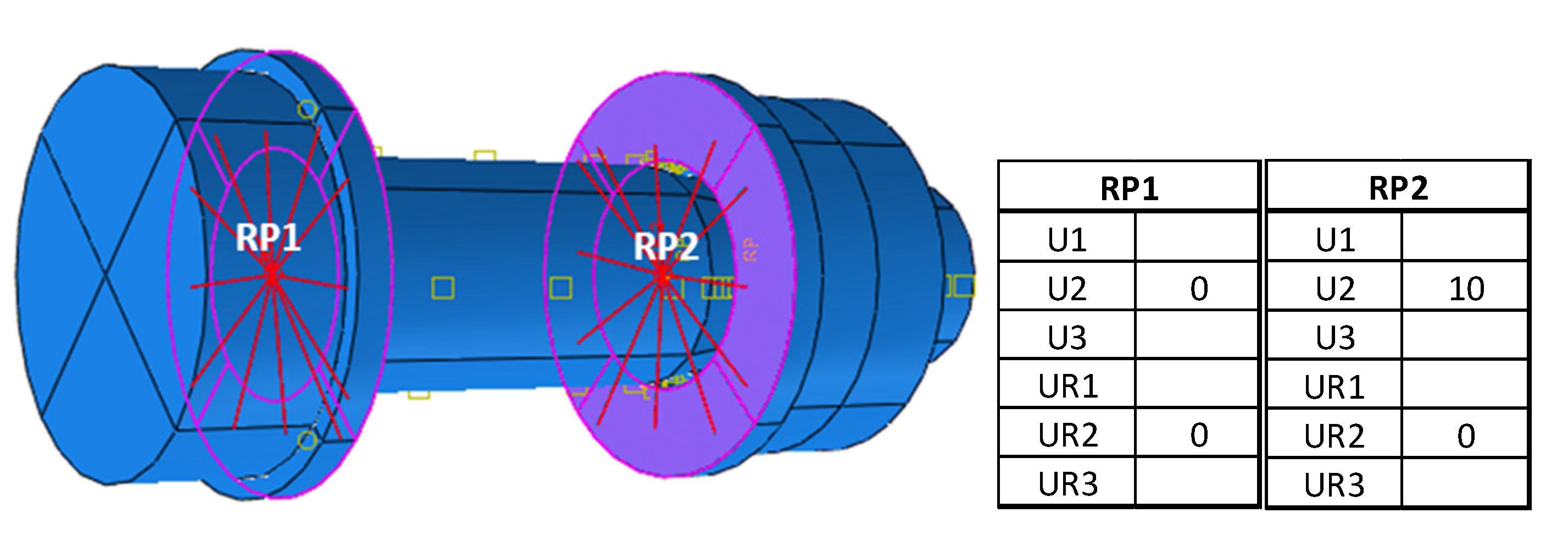



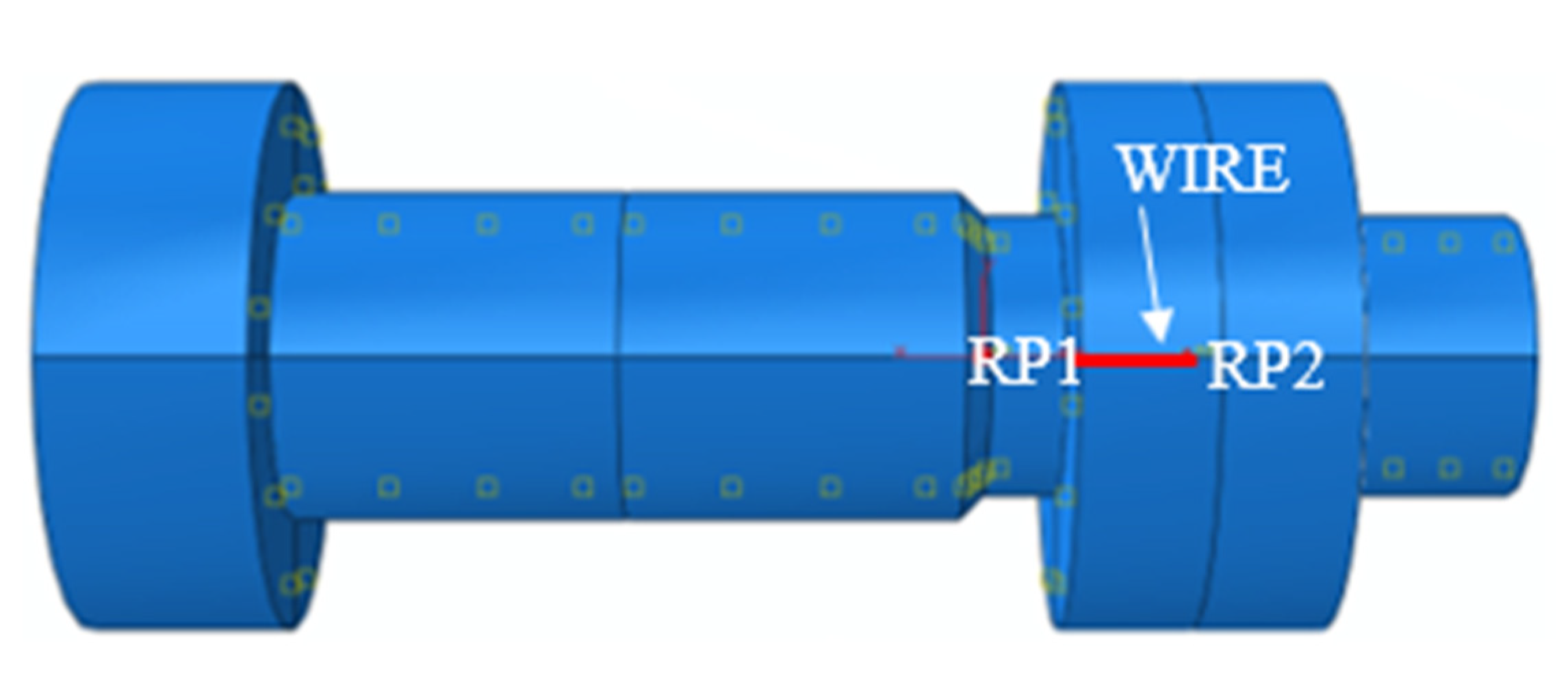
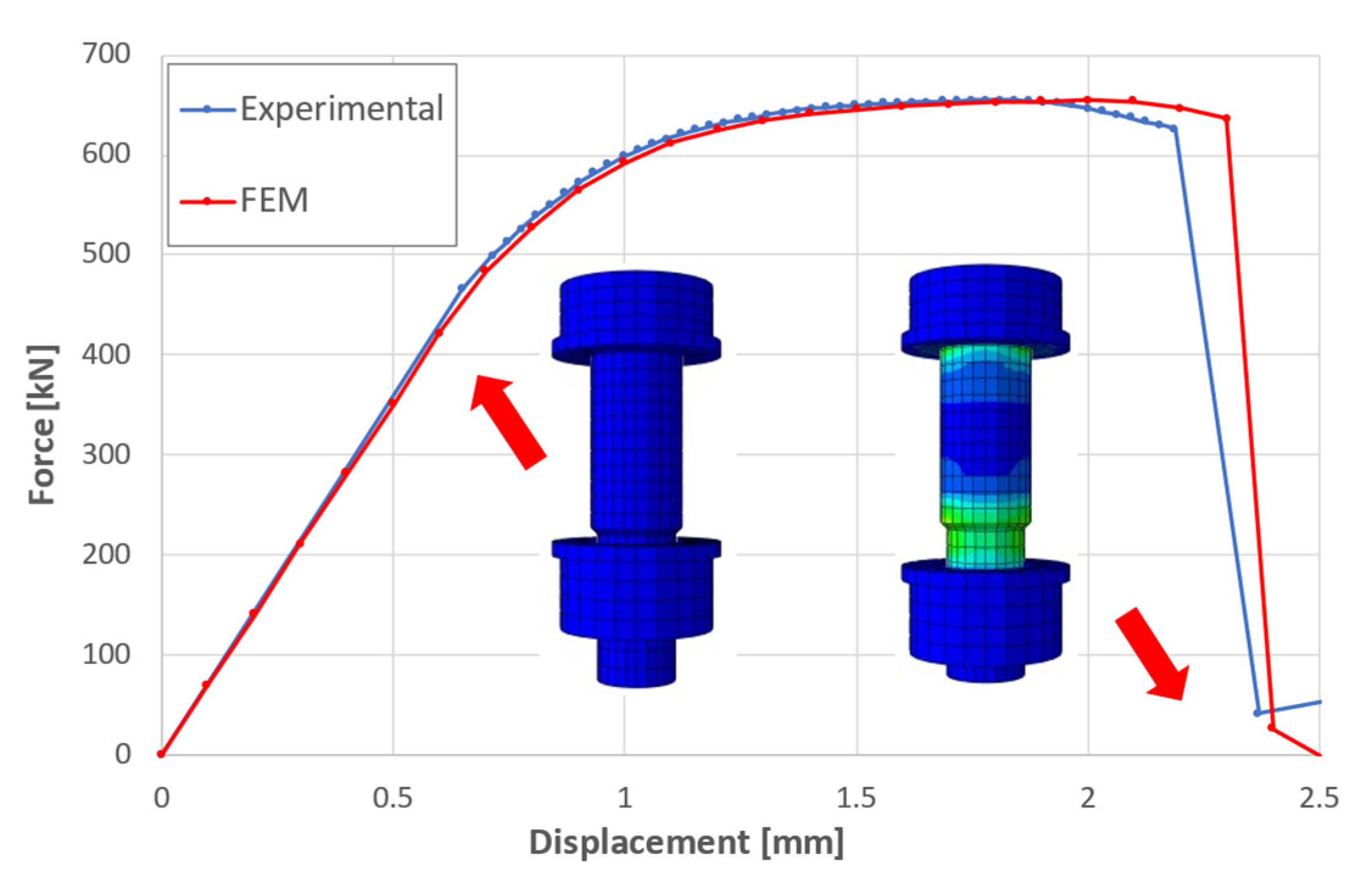


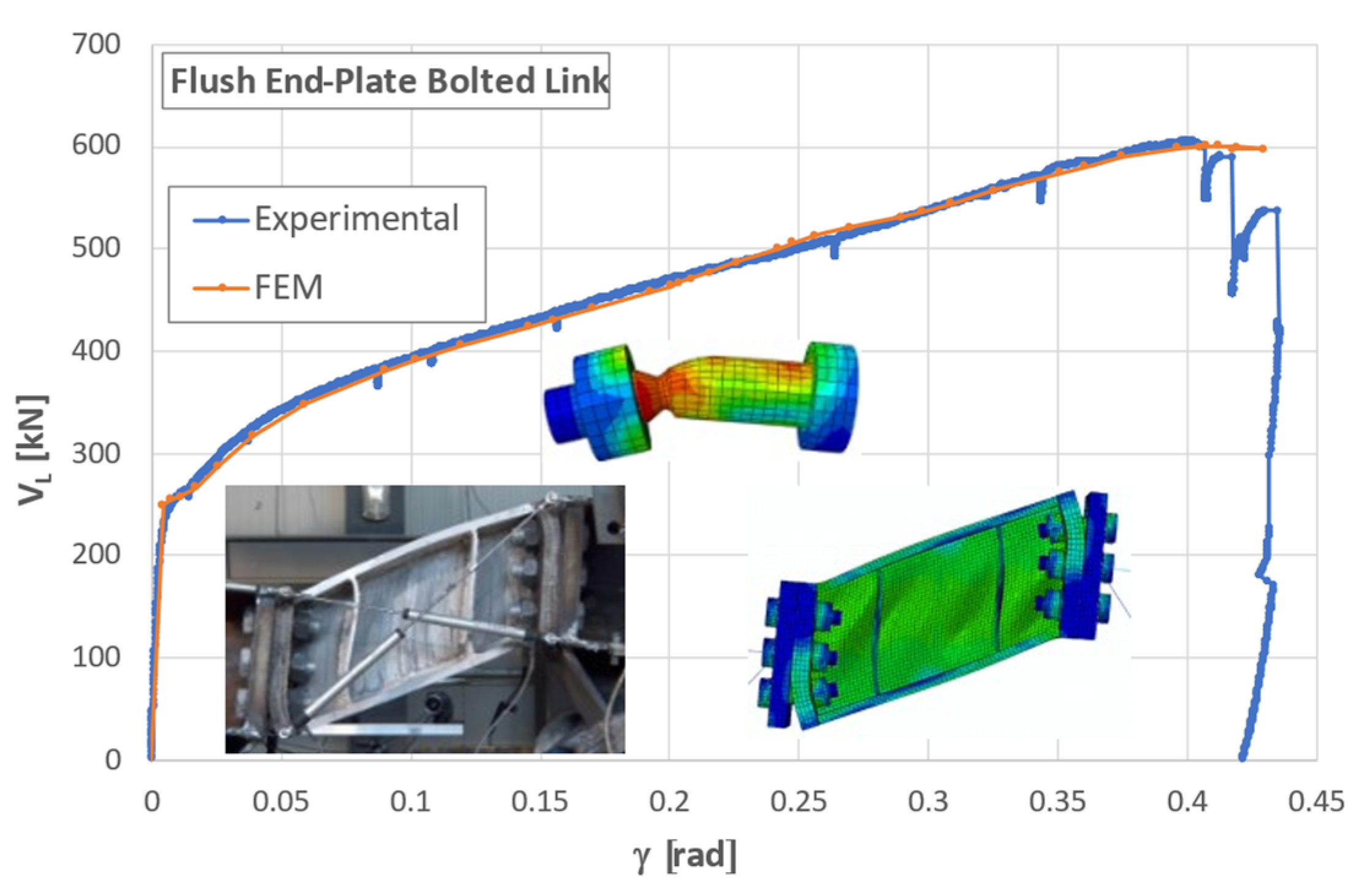
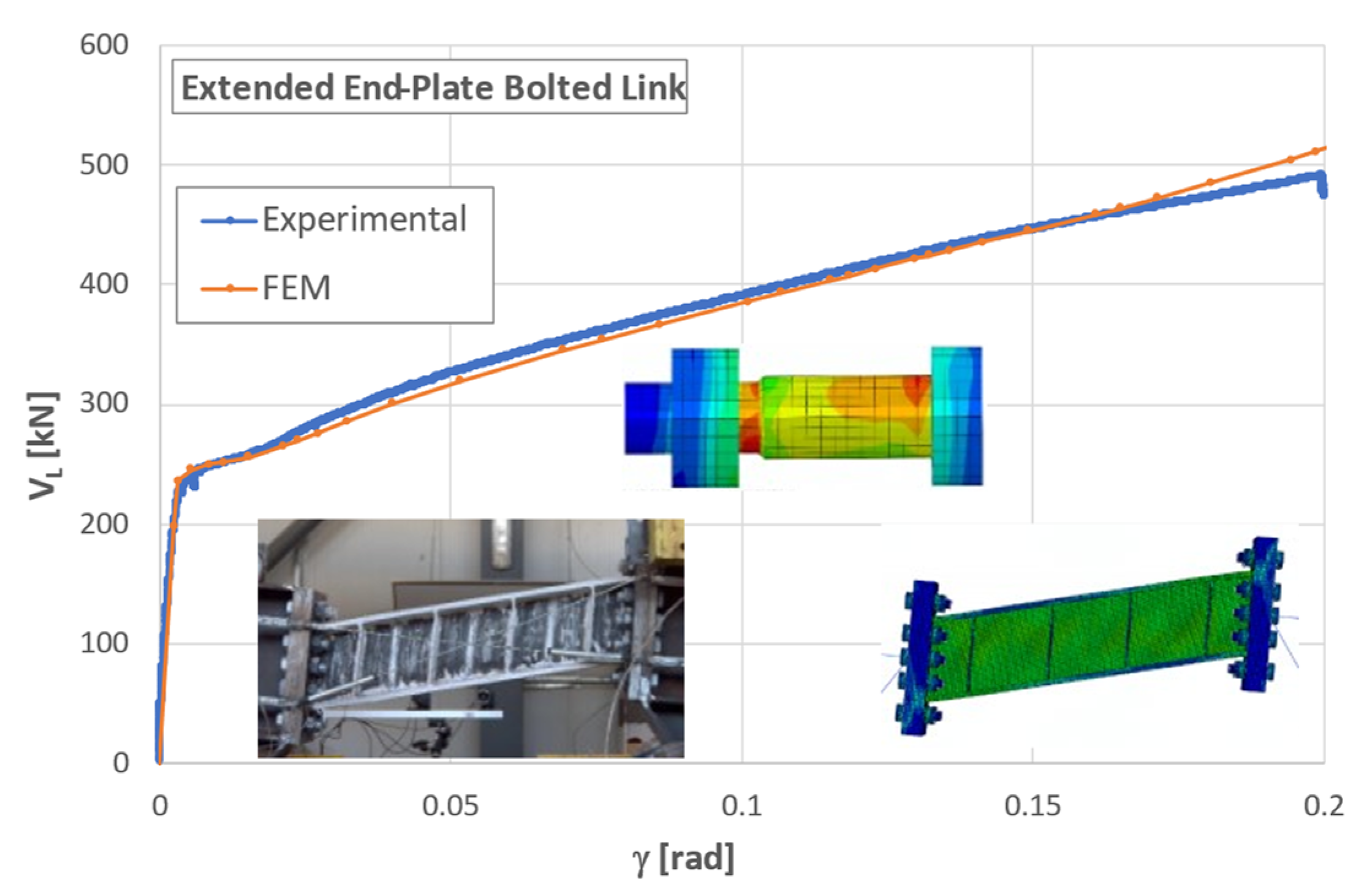
Publisher’s Note: MDPI stays neutral with regard to jurisdictional claims in published maps and institutional affiliations. |
© 2022 by the authors. Licensee MDPI, Basel, Switzerland. This article is an open access article distributed under the terms and conditions of the Creative Commons Attribution (CC BY) license (https://creativecommons.org/licenses/by/4.0/).
Share and Cite
Plaitano, F.; Stratan, A.; Nastri, E. Simplified Modelling of Failure in High Strength Bolts under Combined Tension and Bending. J. Compos. Sci. 2022, 6, 302. https://doi.org/10.3390/jcs6100302
Plaitano F, Stratan A, Nastri E. Simplified Modelling of Failure in High Strength Bolts under Combined Tension and Bending. Journal of Composites Science. 2022; 6(10):302. https://doi.org/10.3390/jcs6100302
Chicago/Turabian StylePlaitano, Francesco, Aurel Stratan, and Elide Nastri. 2022. "Simplified Modelling of Failure in High Strength Bolts under Combined Tension and Bending" Journal of Composites Science 6, no. 10: 302. https://doi.org/10.3390/jcs6100302
APA StylePlaitano, F., Stratan, A., & Nastri, E. (2022). Simplified Modelling of Failure in High Strength Bolts under Combined Tension and Bending. Journal of Composites Science, 6(10), 302. https://doi.org/10.3390/jcs6100302






